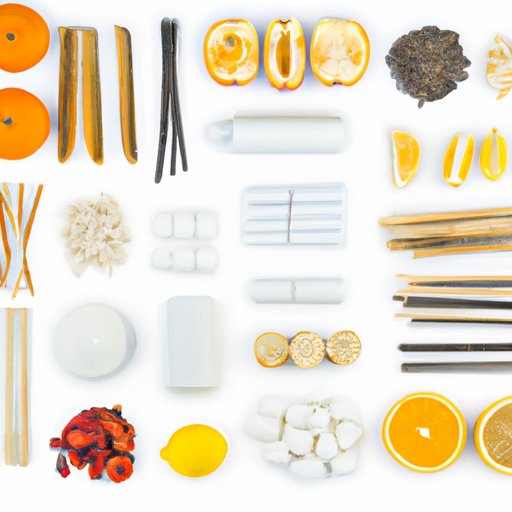
I. Introduction
Burns are one of the most common injuries, and they can range from mild to severe. Knowing what to put on a burn can make a difference in the healing process. This article will explore natural remedies for minor burns, items to keep in a first-aid kit for burns, over-the-counter burn ointments and creams, foods and drinks that can help speed up the healing process, when to see a doctor, and techniques for preventing burns.
II. Natural Remedies for Treating Minor Burns at Home
For minor burns, some natural remedies can help speed up the healing process. Aloe vera is a well-known natural remedy for burns, and it can be applied directly from the plant or in a cream or gel form. Honey is another natural ingredient known for its antibacterial properties, and it is believed to speed up the healing process by reducing inflammation. Lavender oil is an essential oil known for its healing properties and is believed to reduce pain and scarring caused by burns. Other natural ingredients, such as tea tree oil and coconut oil, can also be used to treat minor burns.
III. First-Aid Kits: How to Stock Them and What to Keep On Hand for Burns
Having a well-stocked first-aid kit is essential for treating burns. In addition, in the case of an emergency, it is essential to have the necessary items to help treat a burn. Items such as antibiotic ointment, gauze, and cooling gel are helpful for treating burns. These items can be found at most drugstores or online.
IV. Over-the-Counter Burn Ointments and Creams: What to Look for and When to Use Them
If a more severe burn occurs, over-the-counter burn ointments or creams can help reduce pain and inflammation. Common types of these products are gels, creams, and sprays. Some examples include aloe vera gel, hydrocortisone cream, and lidocaine ointment. These products can be found at your local pharmacy, and it is essential to read the label carefully before use.
V. Foods and Drinks That Can Help Speed Up the Healing Process
Proper nutrition is essential in any healing process. Nutritious foods and drinks that aid in the recovery of burns include fruits, vegetables, lean proteins, and healthy fats. Specifically, foods high in vitamin C, such as broccoli and oranges, can help build collagen and aid in the healing of burns. Additionally, drinking plenty of water can help keep the body hydrated and aid in the healing process.
VI. When to See a Doctor or Seek Emergency Care for a Burn
Burns vary in severity, and some require professional medical attention. A burn that is larger than 3 inches, that causes deep pain, that is on the face or genital area, or that is accompanied by fever or infection requires medical attention. Seek emergency care if you have difficulty breathing, chest pain or pressure, or severe burns.
VII. Techniques for Preventing Burns
There are many techniques that can be used to prevent burns. These include being cautious when working with hot liquids or objects, wearing protective clothing, and using common sense. Employers should provide proper training, equipment, and safety protocols to prevent workplace burn injuries.
VIII. Conclusion
Burns are a common injury, but knowing what to put on a burn can make all the difference. Natural remedies, such as aloe vera and honey, can help speed up the healing process. In addition, keeping a well-stocked first-aid kit on hand and having over-the-counter burn ointments and creams available can help reduce pain and inflammation caused by burns. Proper nutrition is also key in the healing process. Remember to assess the severity of a burn and seek professional medical attention if needed. Finally, being proactive in burn prevention is key to avoiding burn injuries.





